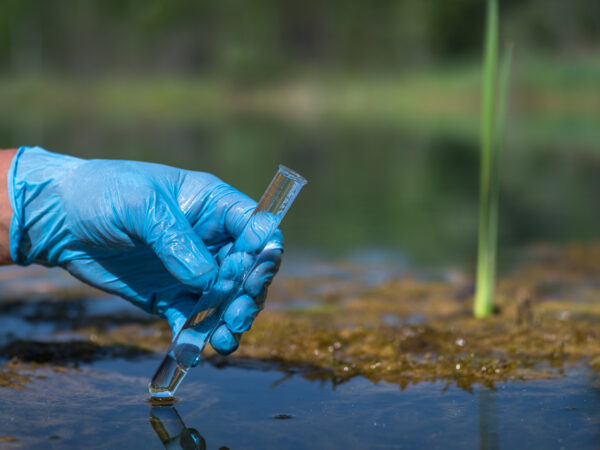
In light of the ongoing PFAS crisis, stricter groundwater regulations were part of a Michigan statewide effort to protect resident’s health and improve water quality. This was before 3M corporation sued the state to invalidate these new rules. 3M prevailed in the lower courts and the state is currently awaiting a decision for an appeal filed with the Michigan Supreme Court.
According to Michigan Department of Environment, Great Lakes and Energy (EGLE) Director, Phil Roos, the lawsuit was: “an attempt to overturn our ability to put rules in place and enforce them.”
This legal dilemma took center stage during EGLE’s fourth annual Great Lakes PFAS Summit, which aired virtually from December 5-7. Roos provided an overview of the role EGLE plays in addressing the perfluoroalkyl and polyfluoroalkyl compounds, known as PFAS. EGLE helps to respond to this chemical pollution by working with the Michigan Attorney General’s office to hold polluters accountable—though this has been challenging.
Abigail Hendershott, executive director of the Michigan PFAS Action Response Team (MPART), noted that after six years of “aggressive investigation” they identified 271 sites with groundwater contamination. Locations with the highest levels of PFAS included landfills, industrial facilities, plating facilities, airports, military sites, laundromats, paper manufacturing, refineries, tanneries, and power stations.
In addition to groundwater, MPART actively monitors surface waters and fish. Hendershott said, in the last year, 1500 fish were sampled from 63 different water bodies in Michigan to help establish safe consumption guidelines.
Speakers, participants and exhibitors shared information throughout the three-day conference regarding all aspects of PFAS pollution. Most notably, this year’s event broke attendance records with over 2000 participants representing all 50 states and nine countries.
“We’ve got people from as close as Canada and as far away as Bangladesh,” said Phil Roos, in his opening address.
Destroying forever chemicals
Suzanne Witt, is research director at Enspired Solutions, a women-owed and led company headquartered in Lansing, MI. The company focuses on PFAS destruction and Witt said they developed a promising new technology.
Current removal systems typically use some type of carbon-based filter. Witt pointed out that this approach moves the contamination from the water to the filter. It is then burned or sent to a landfill, both of which result in the “forever” chemicals going back into the environment, creating a never-ending loop.
Enspired Solutions’ goal was to develop a system that eliminates PFAS from water with no toxic by-products or waste. Witt said, their system utilizes ultraviolet light to break the fluoride bonds in these otherwise “forever” chemicals.
A pilot study is currently underway in Ann Arbor, MI.
PFAS in Michigan fish
Doug Endicott, a principal research scientist and environmental engineer at the Great Lakes Environmental Center presented the findings from a Michigan Department of Natural Resources (DNR) PFAS study.
It was conducted on the Huron River and Kent Lake in Southeastern Michigan after the area was identified as a PFAS hot spot.
In 2018, EGLE conducted statewide testing for PFAS contamination at wastewater treatment plants. Levels at the Wixom plant in Southeast Michigan were found to be 4,800 parts per trillion, which was 100s of times higher than other facilities, Endicott said.
Additional testing identified the source as a local metal plating facility. The facility installed a carbon filtration system, and according to Endicott the follow-up tests showed a 95% drop in PFAS concentrations within 69 days. After a year, there was a 99% drop.
PFAS in Lake Superior fish
Summer Streets, a research scientist at the Minnesota Pollution Control Agency and Michael Mahon, a postdoctoral researcher at the United States Environmental Protection Agency presented findings from a study about fish in the Minnesota portion of Lake Superior.
Streets said, the purpose of the study was to check previously untested areas with possible nearby sources, recheck areas with high levels from previous tests, check important spots for fish harvests, and check tribal waters for the first time.
Where the fish live plays a significant role in how much PFAS contamination they have, according to Mahon. For example, Smelt living closer to Duluth and other nearshore locations had higher levels of PFAS contamination than populations that utilize more remote locations.
While smelt contained the highest levels of exposure among the species tested with an average of 8 nanograms per gram, this was not an alarmingly high value. Streets said, at impacted sites, researchers might find fish “with counts as high as 50, 500 or even 800.”
Wisconsin groundwater study
Bill Phelps is an advanced hydrogeologist with the Wisconsin DNR. Phelps presented the findings from their “PFAS Ambient Shallow Groundwater” study.
Researchers found 7% of samples tested had detectable levels of PFAS. Of those, 4% were above the EPA standard and 1% was above the Wisconsin state standard.
Phelps said three of the four highest PFAS concentration levels were found in agricultural areas where land application of waste is permitted. The study also found a correlation with occurrence from human waste via septic tanks.
Canadian state of PFAS report
Nora Doerr-MacEwen, a manager with Health Canada Safe Environments Directorate, provided an update on Canadian PFAS efforts. Research findings showed that in all five Great Lakes the lake trout and walleye had high PFAS levels, well above Canada’s federal guidelines for the protection of mammals and birds that eat these fish.
Canada is currently conducting multiple monitoring programs along the coasts of Lakes Ontario, Huron and Superior. In one aquatic sediment study, Doerr-MacEwen said, 15 samples from Lake Erie and Saginaw Bay were all found to contain some form of PFAS pollution.
Catch more news at Great Lakes Now:
Clock ticks for water utilities to join national PFAS settlements
Featured image: The former Wurtsmith Air Force base in Oscoda, Michigan is responsible for PFAS in groundwater in nearby communities. (Great Lakes Now Episode 1025)




